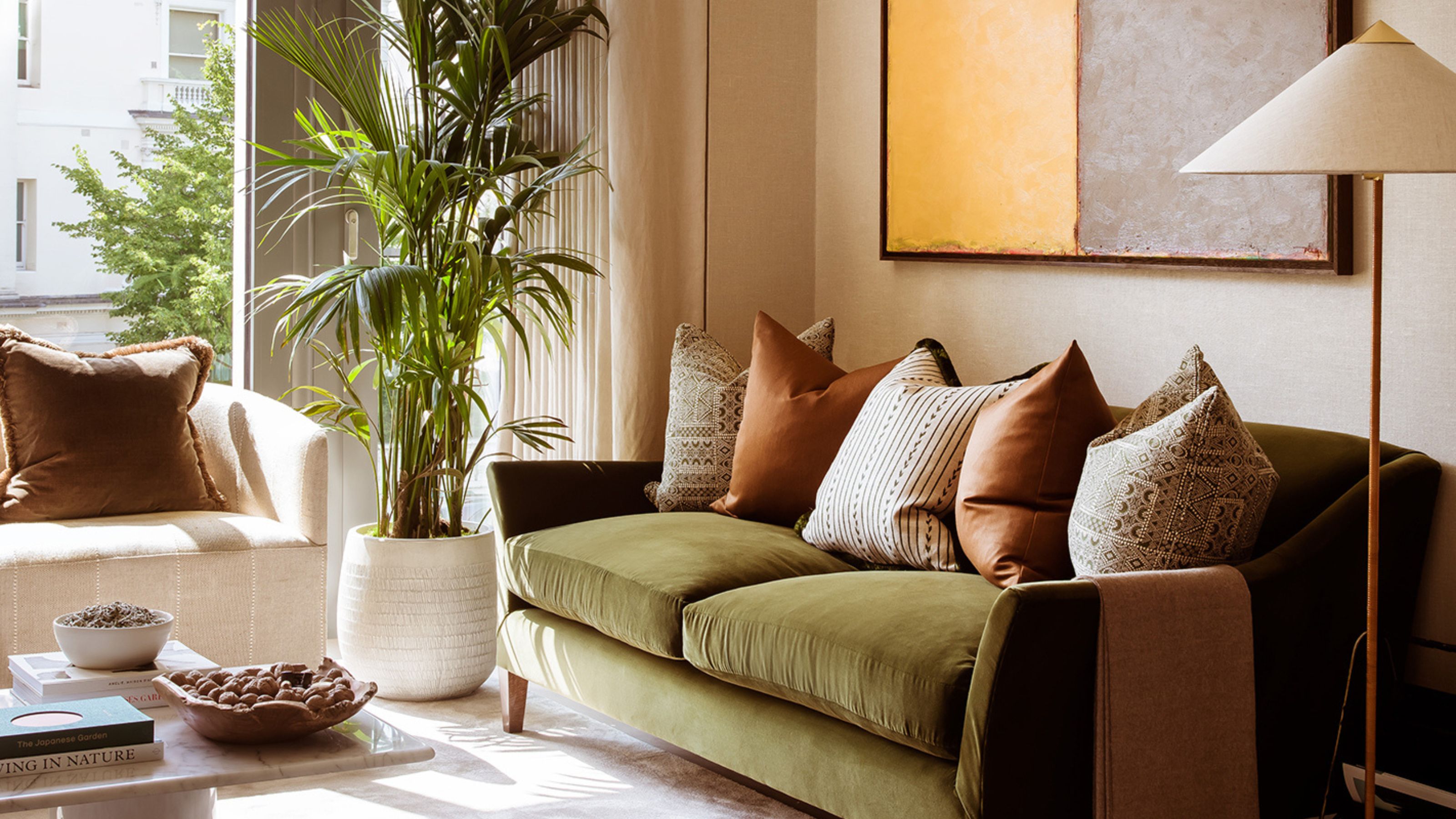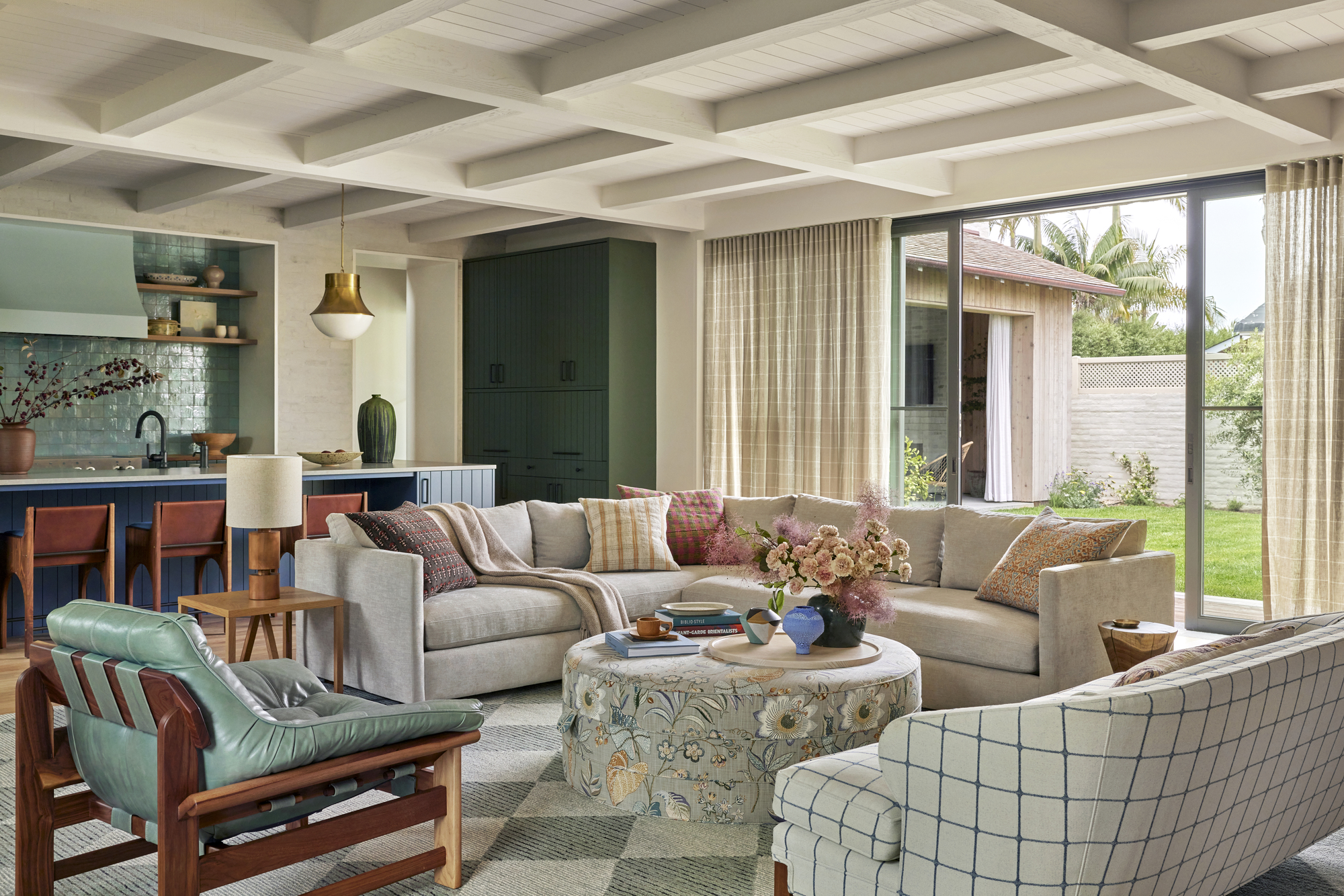
If there’s space for more than one sofa in a living room, matching furniture might be the instinctive choice. But, do sofas really need to match? While a pair of identical sofas can look elegant, putting together different sofas is also a legitimate option, and can look a little more modern in a lot of instances. The effect will be different from matching, of course, but it can add character to the room and show off your personal style.
A haphazard pairing isn’t the answer, however. For design success selecting the best sofas for a room does require some consistency between the two designs even though they aren’t a matching pair.
This is how interiors pros ensure non-matching sofas look great.
So, should you match sofas?

Couches don’t have to match, according to interiors professionals. However, that’s not to say that they shouldn’t, and doing so can be a sound living room sofa idea.
“Matching sofas create a sense of symmetry and formality,” says Colleen Bennett of CBB Designs. “This approach works well in larger rooms or formal living spaces where balance and structure are desired. Matched sofas give the room a cohesive, pulled-together look, making the space feel organized and intentional.
“This arrangement also works well in spaces that focus on symmetry, like traditional or classic interiors,” says Colleen.

There are benefits to not matching sofas, though. “Mismatching sofas bring a relaxed, eclectic energy, adding character and often making the space feel more lived-in,” says Challie Stillman, vice president of creative at Resource Furniture.
“This approach works well for creative or informal spaces, adding texture and allowing personal style to shine through. Mismatched pieces can help differentiate areas within the same room, making each section feel like its own distinct zone, which is especially effective in open-plan living areas.”
Symmetry in interior design is linked to more traditional, formal spaces, so asymmetry can help make things feel casual and modern.
How to mismatch sofas successfully

Matching sofas is a piece of cake. However, if you decide you want the look created by sofas that don’t match, there’s a little more to it.
“Sofas don’t need to be identical, but they should share some design elements — like similar arms, shapes, or materials — if you’re aiming for cohesion,” says Alan Berman, president of Archetype Architecture.
“Aim for a shared design language,” agrees Challie Stillman. “Mixing different sofa types within the same design era or style, such as mid-century or contemporary, can create coherence without feeling overly matched.”
These are the expert guidelines for putting different sofas together.
1. Combining sofa styles

To make different sofas work beautifully together, there are a few factors to bear in mind. “When matching sofas in style aim for complementary elements that align in lines and scale,” says Colleen Bennett.
Pay attention to the parts of a couch. “For example, pairing two sofas with similar arm styles (like rolled or straight) or with consistent base heights can create cohesion,” she says. “Sofas should have similar levels of formality or casualness to avoid a look that feels disjointed.”
Pay attention to their relative sizes, too, says Alan Berman. “Sofas of vastly different sizes can throw off the room’s scale, but contrasting one full-sized sofa with a smaller loveseat or settee often works well, especially if the room is large enough to accommodate this variation,” he says.
2. Putting together sofa types

It’s a “yes” to putting together different sofa types. “You can mix sectionals with standard sofas, or pair a settee with a larger sofa for an elegant touch,” says Colleen Bennett.
But even this should be achieved thoughtfully, especially, again, when it comes to sofa dimensions. “When combining different sofa types, it’s important to keep scale and balance in mind — avoid mixing a large, chunky sectional with a delicate settee, for example, as this can create an unbalanced look,” she says.
You might want a versatile combination. “For a more multifunctional approach, consider a modular sofa and freestanding chaise with moveable backrests,” says Challie Stillman.
3. Selecting upholstery

Think upholstery as well to make different sofas feel like a harmonious combination.
“Keeping materials compatible, like mixing two linen sofas or two leather sofas, helps achieve balance,” says Colleen Bennett.
But as long as balance is your watchword fabrics could equally be mixed. “Two pieces in different fabrics but similar silhouettes or from the same design period can provide cohesion while still adding variety,” says Alan Berman.
Price: $2399.99
Leather and linen could go hand-in-hand if you find the right match of styles, but they don't need to be exactly the same.
Price: $1,699
Look for unifying features. The narrow arms of these two couches share a design language, for example.
FAQs
Do sofa colors need to match?

Whether you should use two different colored sofas in a living room is another question that arises when you’ve decided to go down the road of not matching them.
“When it comes to sofa color, this depends on the desired effect,” says Alan Berman. “Matching colors create a unified, more seamless look, whereas contrasting colors add visual interest. It’s often ideal to select complementary or analogous colors if opting for variation, as this creates a flow without feeling disjointed.”
What are the rules for mixing couches?
The rules for mixing sofas are all about complementarity. “Sofas don’t need to match exactly and, in fact, identical sofas can sometimes make the space feel too formal or static,” says Colleen Bennett of CBB Designs. “A slight variation can add visual interest and make the room feel more dynamic.
“It’s best to keep sofas within a similar style, even if they’re not identical,” she advises. “Sofas in complementary styles — like two modern pieces or two traditional designs — create harmony without strict uniformity.
“Similar sizes or proportions prevent one sofa from visually overpowering the other. When combining a larger sofa with a smaller one, such as a sofa and loveseat, keep them proportional to avoid an unbalanced look.
“Colors don’t have to match exactly, but choosing colors in the same palette or complementary shades creates cohesion without being too matchy. For example, pairing a navy sofa with a soft gray one maintains balance while adding depth,” she says.
Do a couch and loveseat have to match?
A sofa and a loveseat don’t have to match, but it’s not a case of anything goes. “A sofa and loveseat don’t have to match exactly, but they should coordinate in style for a balanced look,” says Colleen Bennett of CBB Designs.
“Pairing a structured, formal sofa with a casual, slouchy loveseat, for example, could make the room feel visually fragmented. It’s best to keep the two within a similar design family, like pairing two contemporary or two traditional pieces, while varying textures or shades for subtle contrast.”







